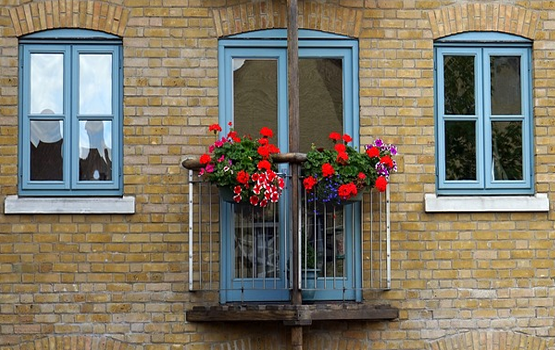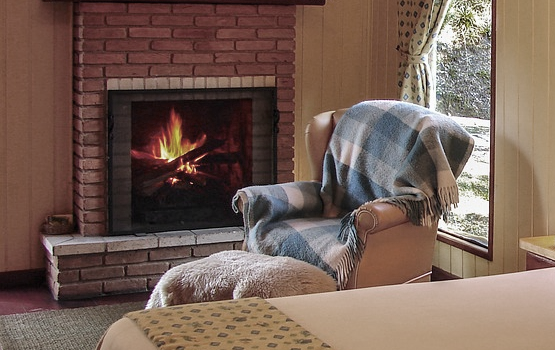Is Your Home Making You Sick?
Did you know that indoor air pollutants in your home can actually be more harmful to your families' health than the air outside?
That is because we typically spend about half of our lives in our homes. So, make sure you have a healthy house.
Air quality can vary according to a number of factors. For example, today's energy-efficient homes provide better insulation than ever before, but often at the expense of air exchange. As a result, moisture may build up, creating a breeding ground for things like bacteria, fungi, and mold. There are also different toxic substances related to different products you use in your household. So, read the labels and try to minimize exposure to toxic substances. Unfortunately they are everywhere.
Over the past few years, studies in Canada and U.S.A. are showing an array of potentially harmful pollutants including:
- Mold spores, which come from too much humidity in the home. Water-damaged materials frequently grow molds and other organisms that can cause allergies and many other illnesses.
- Volatile organic compounds (VOCs) which are found in many paints, flooring and air fresheners;
- Radon, which can be released through the soil and seep into our homes via cracks in the foundation. Exposure to radon, can lead to lung cancer, but it may be years before that happens.
- Asbestos, which was commonly used as a building and insulation material between 1920 and 1978. Exposure to small amounts of asbestos probably won't harm you, but breathing high levels of it can increase your risk of cancer and lung disease;
- Lead, many older houses (mostly build before 1978) contain lead paint, which causes lead poisoning. So, if you live in an older home, consider testing for lead paint. Another risk of lead poisoning comes from scented candles, because, some candle makers are still using lead cores in their wicks, which can result in lead particles being emitted into the air of your home. This is particularly dangerous for infants, small children, and pregnant women.
- Combustion gases (which include carbon monoxide, nitrogen oxides, and sulfur dioxide), can cause flu-like symptoms, respiratory illnesses, or even death. Clean and maintain your chimneys and furnace regularly (every year), making sure that they are properly vented. Never use unvented combustion appliances (such as portable kerosene heaters) indoors. Install an exhaust hood over a gas stove and have a carbon monoxide monitor installed.
- Pesticides, which can enter your house through the windows, ventilation systems or soil. Try to avoid using chemical pesticides when maintaining your lawns, gardens, and trees.
- Tobacco smoke exposure increases your risk for heart disease, respiratory infections, lung cancer or other lung problems. Don't smoke and never allow tobacco smoke in your home.
- Water pollutants can be anywhere. Check the water quality in your area. If you use a private well, test your water every year for nitrates, bacteria, pesticides and organic chemicals.
- Food poisoning and other pollutants. Make sure your food is properly prepared and stored to prevent food poisoning. Wash and store your cooking equipment properly to avoid health hazards.
Poor indoor air quality may cause or aggravate recurring flu, asthma, respiratory allergies, sinusitis, bronchitis, persistent coughs, headaches, insomnia and chronic fatigue. Because of all that think about indoor air quality every time before you introduce new things into your home and make home hygiene a priority.
Keep in mind that even the best municipal water systems can fail to remove chlorine taste and odor, as well as sediment and parasitic cysts in drinking water. Invest in quality water system to improve your health.
10 SIMPLE & EASY STEPS TO A HEALTHY HOME:
- Ventilate your home properly. For example, if you don't have window in your bathrooms, make sure your ventilation fans exhaust outdoors. If they exhaust air into the attic, they are not getting rid of moisture from your house.
- Buy quality furnace filter. Look for Eco Options approved electrostatic, electronic and HEPA filters. They trap most of the toxins and airborne materials. You can reduce the chances of spreading cold and flu viruses within your home just by upgrading to an electronic filter.
- Avoid chemical cleaners. Use environment friendly, non-toxic, biodegradable products and old fashioned cleaners such as baking soda, lemon juice and vinegar. Keep household chemicals away from children and pets, and if possible, store them outside the house and away from living spaces.
- Avoid standard air fresheners which contain many chemicals. Use vanilla and lemon or orange oil instead.
- Bring plants into your home to improve indoor air quality. They absorb carbon dioxide and release oxygen. Make sure you use only natural fertilizers for your plants.
- Never store paint cans and solvents in your house or attached garage. Store them in a shed away from your home.
- Carpet cleaners contain many dangerous chemicals. Instead, clean your carpets with steam or hot water and baking soda mixture.
- Use only low VOC paints to redecorate your home. They release fewer pollutants and are virtually odorless.
- Avoid products that off-gas such as treated drapes, upholstery, composite wood products, carpets, vinyl and plastic products. Choose more natural products instead.
- Buy water treatment system to treat your drinking water. Quality water filters destroy more than 98% of harmful micro-organisms, including E.coli and giardia.
ABOUT THIS ARTICLE
We grant you the right to publish this article on your website, in your online newsletter or ezine as long as the article is left in the original state and includes the complete resource box unchanged, which means it provides credit to the author, author's statement, and all information about content provider.
All the links included in resource box should be in clickable hyperlinked format. We would appreciate if you notify us of your intent to publish our article and send us a courtesy copy or link.
The articles published on www.brantrealty.com express the views of the authors and do not reflect the view of the BrantRealty.com
RESOURCES:
This article is reprinted with permission.
ABOUT THE AUTHOR
Maya Gavric, entrepreneur, consultant, former realtor, freelance writer, web developer, artist and marketing coach has been working, researching and reporting on the Internet for years. Her numerous articles offer valuable insight and tips on wide variety of topics. In recent times she has paid particular attention to knowledge management on the Internet and environmental problems, exploring how our attention to hot issues might best transform current situation into better practice.
Article Source: http://www.brantrealty.com
Windows & Doors
Worn and torn weather stripping around windows and doors waste energy when heating and cooling your home. Since 6 to 10 percent of a home's energy loss occurs around windows and doors without proper airtight seal, it is good idea to check for drafts by holding a lit candle around window frames and doors. If candle flickers, you have a draft and need to replace or install weather stripping and caulking around windows and doors. It is also good idea to add a door sweep. Read more...
Heating Tips
Programmable thermostats can help you cat your energy bill by 10 percent or more. They can be set to automatically turn down the temperature for any number of hours during a day or night, either when you're not home or when you're sleeping. They are now cheaper than ever, with models starting under $30. Also, make sure your thermostat is on the right wall.
Read more...
Buyer Info
Since choosing a right property to buy starts with needs and desires and finishes with a sizable portion of your earnings used for paying for it, it's important to ensure that the property you choose both meets your needs and is a good "fit" with your financial situation.
Read more...


